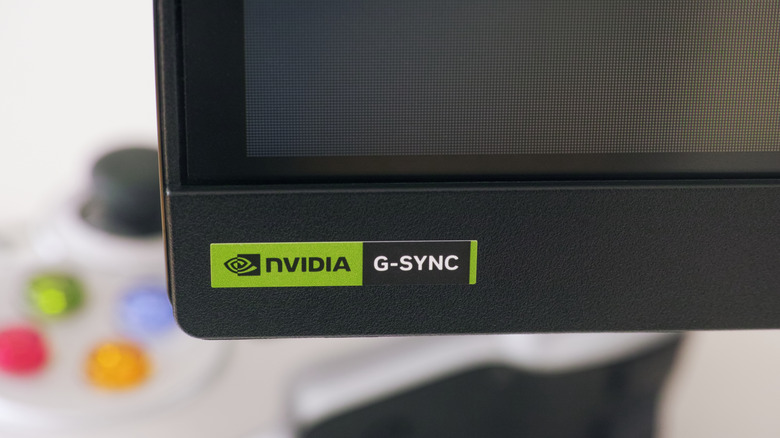Do AMD Graphics Cards Work With Nvidia G-Sync Monitors?
Two of the most popular graphics card makers for PC are Nvidia and AMD, so monitor brands tailor their devices to work with one of these two companies. For example, NVIDIA G-Sync monitors, a frame rate modifier meant to offer smoother gameplay, are designed to work with Nvidia's technology. AMD has its own version called AMD FreeSync, and the best gaming monitors usually support one or the other. So, can you use an AMD Radeon graphics card with Nvidia G-Sync monitors? Buckle up, because this is where things get kind of confusing.
The realistic answer is sort of. As of recently, you can use an AMD graphics card with an Nvidia-enabled monitor, but looking back at information from years past might make your head spin. That's because Nvidia's G-Sync requires a module embedded in the monitor, which communicates with Nvidia GPUs. AMD GPUs lack the technology to communicate with these modules. That also meant, at one time, G-Sync required a special monitor. However, Nvidia made changes to the technology in 2019 that now allow AMD graphics card users to utilize a native G-Sync monitor with VRR or variable refresh rate. Where that special G-Sync module might have locked you out of taking full advantage of the display's features before, that's no longer the case. It is worth noting that G-Sync technology favors DisplayPort over HDMI. Then again, using DisplayPort can free up HDMI ports on your display if you're thinking of buying a Roku streaming stick, media player, or game console. So, that might be an added win.
What does Nvidia G-Sync actually do?
If you plug an AMD Radeon graphics card into an Nvidia G-Sync-enabled monitor, and it doesn't also support FreeSync, you may lose compatibility without VRR. But you can still use the monitor normally. What does that mean, exactly, and what does G-Sync actually do, then?
Both the graphics card and the monitor have refresh rates — the number of times per second a display or graphics card updates with a new image — and when they are out of sync, one is higher or lower than the other, it can cause onscreen artifacting and screen tearing, especially in games. G-Sync smooths out this process and basically allows your graphics card to communicate with the monitor near-instantly. FreeSync works pretty much the same way; it's just AMD's version. As to whether the technology is worth it or not, that's always going to be up to you and your experiences. But if you have an Nvidia graphics card, you might as well use it. If you have an AMD graphics card, look for FreeSync-compatible monitors or adaptive and variable refresh rate options. Either way, when you're shopping for those cost-effective graphics cards from AMD and Nvidia, you should be able to find a monitor that's compatible.

